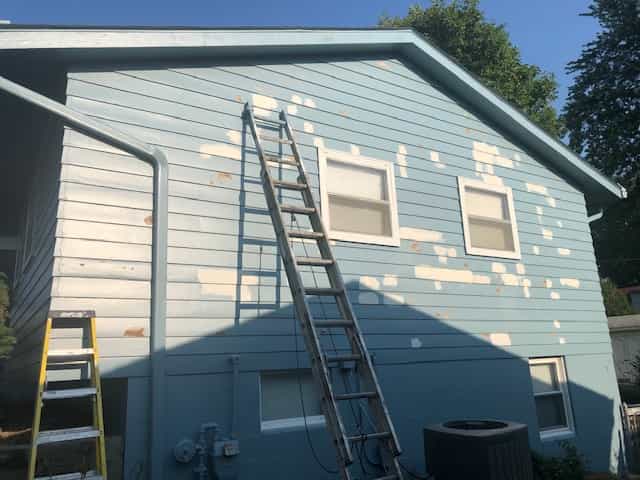Fixing painting problems is something we are called in to do for customers all the time. These are things we are asked to take care of after a DIY (do it yourselfer) or amateur has done some painting. We just finished a post on this and were asked for more.
Cissing
This is when paint does not want to adhere to the surface. This can be because of something being on the surface like grease, oil or something else. Sometimes this is because someone is trying to paint with a latex paint over an oil base product. This is common in older homes that have been painted with an oil base product. To fix this you want to make sure the surface is clean. Depending on what is on the surface you may need to clean it with a solution of TSP and water (trisodium phosphate) or denatured. Sand the surface down and make sure to wipe it free of any sanding dust. A quality bonding primer is a good idea before you paint.
Bubbles
This is the paint not sticking to those areas where the paint bubbles. More often then not this is because of moisture. With latex paint on the exterior of a house you can sometimes see where the surface looks fine but then after the sun hits the area paint bubbles appear and then disappear after the sun is no longer on that area. There are many possible causes for this from the paint being applied below the dew point, moisture issues in the siding, contaminates on the siding, the previous coating no longer adhering, etc. It is important to determine the cause so it doesn’t reoccur.

When this happens you want to cut the bubbles out, sand the area, prime it and then skim the area over with drywall mud on the interior or exterior grade patching compound on the outside to fix the scar. Sand it, prime it and paint.

Stuck Tape
New tape that is stuck because of the paint is easily removed if you use a razor knife and lightly cut the line between the paint and the tape. Old tape that has been forgotten can be removed with a hair dryer. it will soften the brittle tape glue and it can be rubbed off the surface.
Bad Cut Lines
If you have the original paint the fix is simple. If your not accustomed to cutting paint lines then take the time to tape off the areas you need to redo. Press the tape down well. Repaint the areas and pull the tape before it is completely dry.
Paint on Carpet
This one happens more often then you might think. All professional painters use a drop cloth for a reason. If the spot or spots are not too large the following will work. There are two different approaches to take. If the carpet is light colored then your best bet is to use a razor blade to shave or cut it out of the top layer of the carpet. If you wet the area to soften the paint you risk having the tint in the paint separate from the paint and stain the carpet. On medium to darker carpet try putting a wet rag on the spot to soften the paint. Leave it there for awhile. Let time do the work. Then pick at it and try to run it out of the carpet. You may need to use a razor blade again when done.
Brush Marks
Brush marks are the sign of a low quality brush, poor brush technique or brushing back into paint as it dries. The simpleist fix is to sand the areas with the brush marks and brush the areas out with smooth even strokes of the brush. Do not go back into the paint as it dries.
Fixing painting problems is usually not difficult if you know how to do it. Hope this information is helpful.


